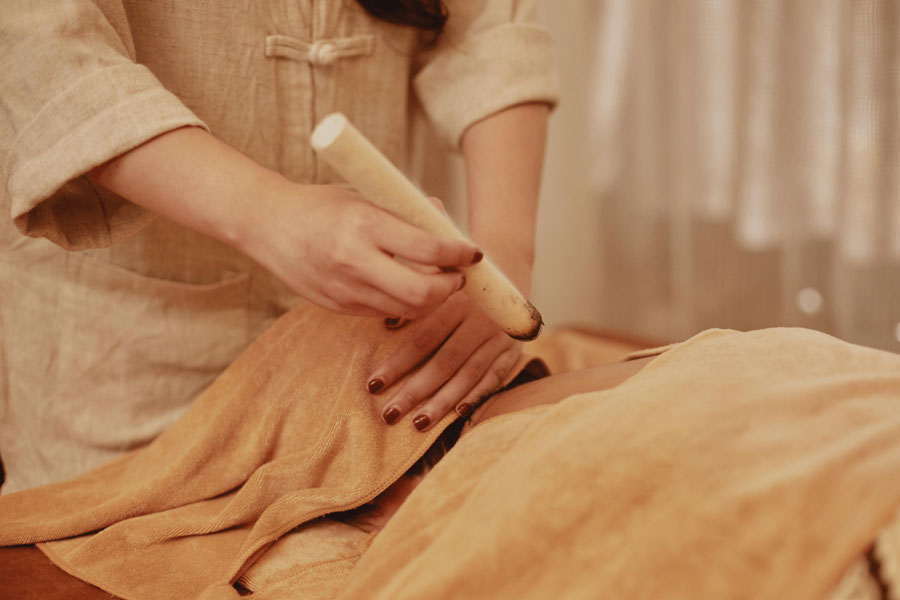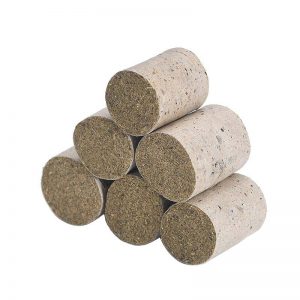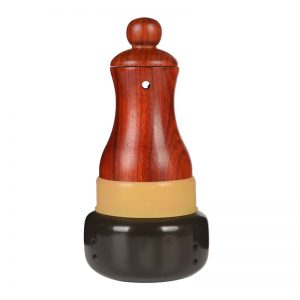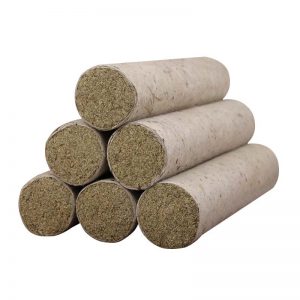Chronic bronchitis is the long-term non-specific inflammation of the trachea, bronchus mucosa, and surrounding tissue. The manifestations include a lingering cough with expectoration of phlegm and possible gasping for breath. The disease usually lasts at least three months each year and is difficult to cure. Its morbidity rate is relatively high among the weak and the elderly. Dust, air pollution, long-term smoking, and a sudden change in air temperature can trigger chronic bronchitis.
This disease belongs to cough, panting, and phlegm-rheum in TCM. If external pathogenic factors invade the lung or internal pathogenic factors affect the lung due to dysfunction of the zang-fu organs, the lung will lose its ability to diffuse, disperse, purify and descend. This will lead to an ascending counterflow of lung qi and eventually to chronic bronchitis. The development and prognosis of this disease are closely related to the lung, spleen, and kidney.
Clinical manifestations of chronic bronchitis
- Lingering cough, expectoration of white foamy phlegm. The sputum will be purulent and yellow or yellow-green if accompanied by infection. The symptoms last for more than three months a year for two consecutive years.
- Diagnosis can also be made if the disease lasts less than three months but there is clear proof from lab tests such as X-ray or lung function tests.
6 Acupuncture points for chronic bronchitis
The basic treatment principles for chronic bronchitis are diffusing the lung, relieving cough, directing qi downward, and dissolving phlegm. Acupoints to be explored should be selected based on the following principles: the lung governs qi and controls breathing; the spleen governs the transportation and transformation of water dampness; the kidney governs qi reception.
1. GV 14 Acupoint (Dazhui)
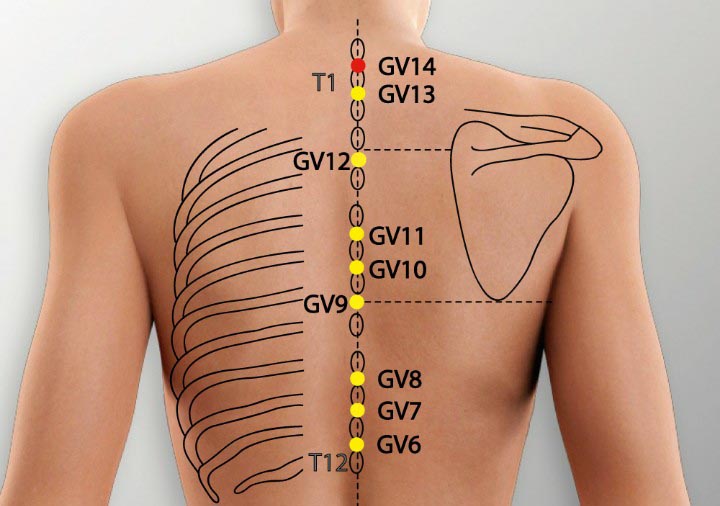
Location: On the posterior midline in the depression under the spinous process of the seventh cervical vertebrae.
Effect: Releases the exterior, dissipates cold, and clears heat.
2. GV 9 Acupoint (Zhiyang)
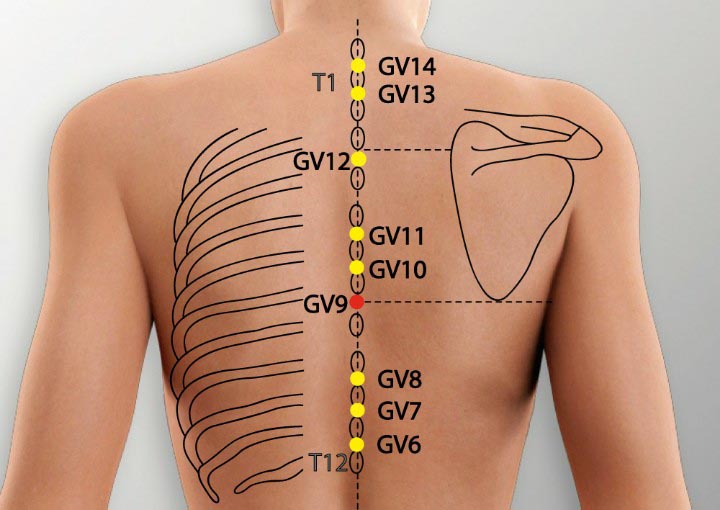
Location: On the posterior midline in the depression below the spinous process of the seventh thoracic vertebra.
Effect: Warms the du Mai, unblocks yang.
3. GV 4 Acupoint (Mingmen)
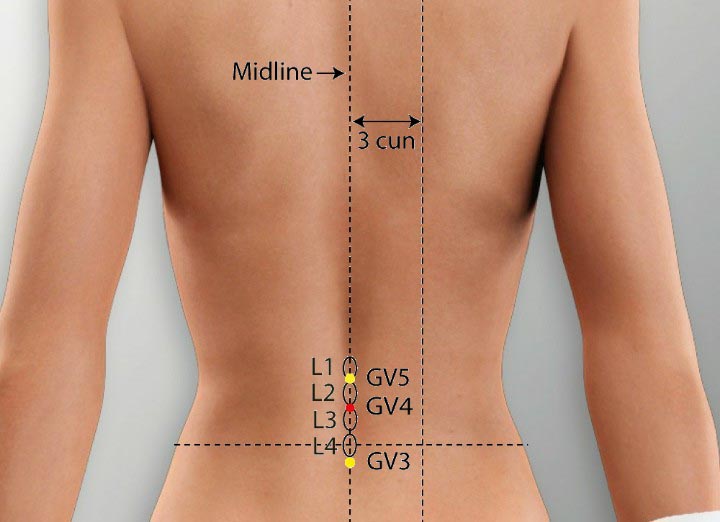
Location: On the lower back on the posterior midline in the depression under the spinous process of the second lumbar vertebrae.
Effect: Supplements and boosts kidney qi, improve qi reception, relieve panting.
4. LU 1 Acupoint (Zhongfu)
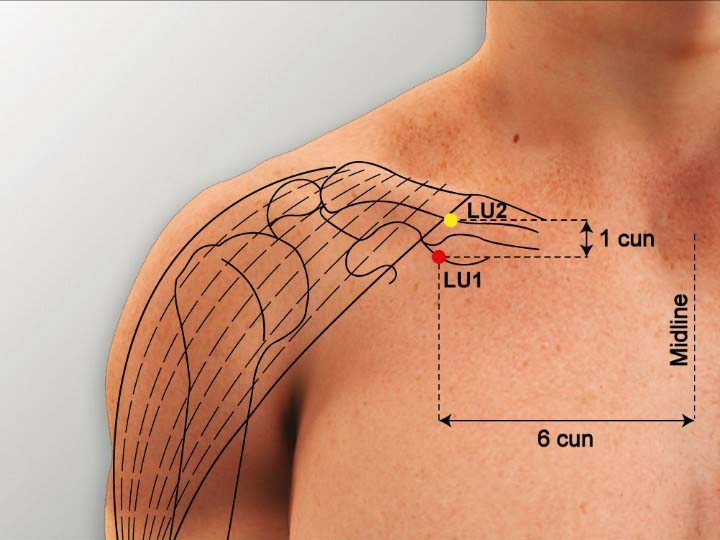
Location: On the upper lateral chest 6 cun lateral to the anterior midline, level with the first intercostal space.
Effect: Diffuses lung qi, relieves cough and panting, and dissolves phlegm.
5. BL 13 Acupoint (Feishu)
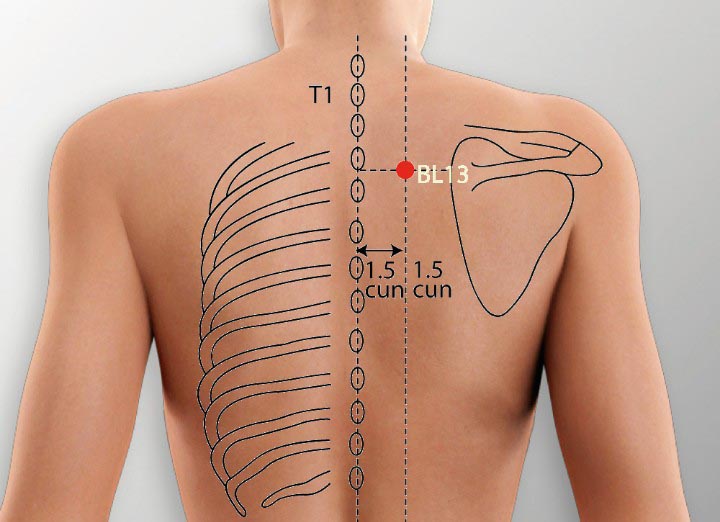
Location: On the back 1.5 cun lateral to the midline, level with the lower border of the spinous process of the third thoracic vertebrae.
Effect: Supplements lung qi, dissolves phlegm, relieves cough.
6. BL 20 Acupoint (Pishu)
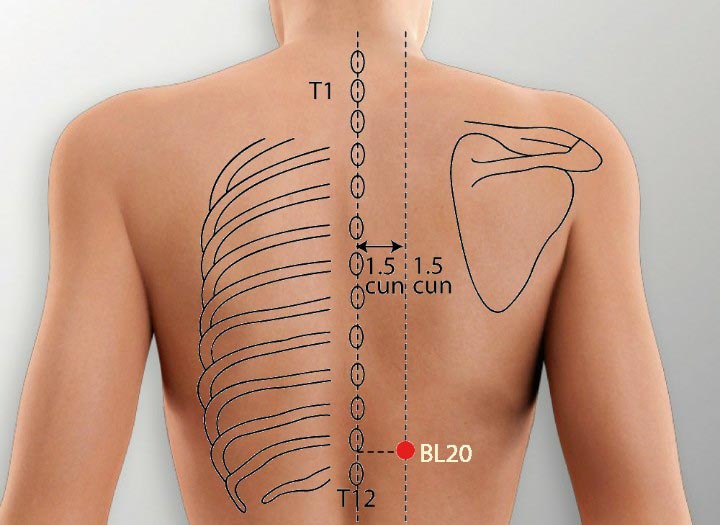
Location: On the back, 1.5 cun lateral to the midline, at the level of the lower border of the spinous process of the eleventh thoracic vertebrae.
Effect: Supplements the spleen, boosts qi, dissolves phlegm, relieves cough.
Moxibustion treatment methods
- Back-and-forth moxibustion along the channel on GV 14, GV 9, and GV 4 to activate the yang qi of the du Mai. The heat should transmit along the du Mai from the vertex to the lower back. The du Mai governs the yang qi of the whole body, so the combination of these acupoints can warm the du Mai and unblock the yang. These points supplement the original yang and disperse lung-wei, making the body feel comfortable.
- Double-point mild moxibustion on LU 1. The heat should penetrate into the thorax and transmit to the upper limbs. LU 1 is the front-mu point of the lung channel and the intersecting point of the hand taiyin lung channel with the foot taiyin spleen channel, and thus can diffuse lung qi, relieve cough and panting, and dissolve phlegm.
- Double-point mild moxibustion on BL 13. The heat should penetrate into the thorax and transmit to the neck and nape. BL 13 is where lung qi gathers on the back, and thus can be used to treat diseases of the lung by supplementing lung qi, dissolving phlegm and relieving cough.
- Double-point mild moxibustion on BL 20. The heat should penetrate and transmit throughout the back. BL 20 is where spleen qi gathers on the back, and thus can be used to treat diseases of the spleen by supplementing spleen qi, dissolving phlegm and relieving cough.
Choose one or two groups of the above acupoints each time. Treat once a day, with 10 days making a course of treatment. There should be a two-to-five-day break between courses. In total, give two or three courses.
Conclusion
Moxibustion can be effective in the treatment of chronic bronchitis. For serious cases, comprehensive treatment should be administered. For cough due to cardiopulmonary disease, treating the primary disease should be given priority.
The patient should be advised to avoid wind and cold, eat light food, and avoid smoking and drinking alcohol. Dust, smog, and other irritants should also be avoided.

